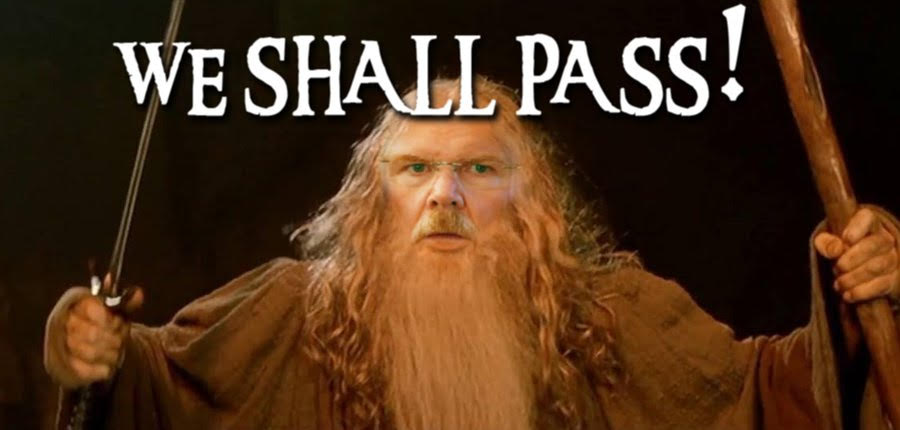|
By: Kathy Kent Toney, President of Kent Business Solutions Ah, the sweet taste of victory! For Chiefs Kingdom, wins are always great, but an AFC Championship win leading to a back-to-back Super Bowl, that's even sweeter! We’re so blessed to have the Chiefs, a truly world-class organization, right here in Kansas City. And how fortunate we are to have Head Coach, Andy Reid! Speaking of Andy, did you know he’s a process wizard? He’s an expert when it comes to following a consistent process that leads to success. In his own words, he said: “We focus on the process, we focus on what we can control.” Let’s dive into a few real-life examples, inspired by Andy, that can help you in your organization: 1. Hold Regular Creative Brainstorming Sessions At least once a week, he and his coaches brainstorm far-out-there play ideas and whiteboards them. Eric Bieniemy, the current Offensive Coordinator, puts it this way: "[There’s] no such thing as a bad idea, just as long as no one gets their feelings hurt. Some are better than others." And Andy is pretty hard to top when it comes to ideas.” Lots of times, he’ll find things that happened decades ago. For those of you who are familiar with the Shift the Rose Bowl Parade Right play in the Super Bowl LIV…that’s a great example. It dates way back to the 1948 Rose Bowl! Chad Henne, the back-up quarterback, once said: “Who sits here and finds these?” That’s Andy for you! Lessons Learned: Involve your staff, the creative minds in your organization, to brainstorm ideas. Be sure to think outside of the box. Hold regular meetings around this…put these sessions on your calendars. Also, don’t overlook resurrecting historical practices or ideas that have worked and modernize them. Then flesh out these ideas to prepare for the next step. 2. Hold Regular Meetings to Review Creative Ideas Every Tuesday, Andy Reid jots these ideas down on 5x7 cards that he passes out to his quarterbacks for review. Then, the group picks out a favorite or two, and the more outrageous, the better! Next, he tries them out at the next game. The Chiefs players love to look for his reaction when he uses that play...it’s usually a wink and smile to the onlookers. 😊 Lessons Learned: Again, schedule a recurring meeting on your calendar for reviewing creative ideas. Then, review them with key leaders. Have them tailor down your list for implementation in your organization. 3. Do the Necessary Prep to Be Game-Ready, Every Time Andy’s dedication to his work is legendary. He’s well known across the league for the amount of prep he puts into getting his team ready for every game. Here’s an example of that: Brad Childress tells the story of when he worked with Andy years ago. Every Friday evening, without fail, Andy would group text both him and then Offensive Coordinator Matt Nagy two options of the 15 opening plays for the next Sunday’s game. He could always expect the text, and it usually came during dinnertime! Then, they would meet the next day at 7:00 AM to go over the options. Lessons Learned: Set up a regular cadence of important activities, basically a process, that can lead to game-changing results. Be sure to involve key leaders to review game plans and adjust if needed, based on their feedback. These examples from Andy are just the tip of the iceberg…I’m sure he has many other systems that he consistently follows. In the end, his diligence to focusing on process is legendary for building winning teams. Just like Andy Reid’s persistence in following a weekly process, organizations that excel in today’s challenging business environment do the same. Streamlined, robust business processes that are consistently followed produce:
If your organization is interested in sprucing up its business processes, so you can more consistently win in all you do, I’d love to have a chat! Click here to get a time scheduled. ‘til next time, Kathy
0 Comments
Part 3 of 3: How to Ensure a Successful Digital Transformation Journey By: Kathy Kent Toney, President of Kent Business Solutions How many of you have implemented a major piece of new software, and in the end, you never really found out that it was worth your investment? Unfortunately, too many companies often fall into this category. There’s definitely a better way to measure project success! So, what are the best practices around that? It’s different for each company, depending on a number of variables:
There are a number of best practices, but often the best measure is the answer to the following question: Did the project meet the objectives that were established for it? But let's back up a bit. Before you can even answer this question, you'll obviously need to establish these objectives. To do that, there are several things you'll want to look at. First, it’s important to determine what the tangible and intangible success criteria will be for the project. There are three areas, or factors, to look at:
There are other factors as well: monetary, governmental and environmental. For now, let’s just look at the top three: 1. People There are several aspects to measuring success with the People piece. Having solid answers to the following questions is a great way to start:
The answer to this last question is key; overall acceptance of the future state is essential for success, once the transition is completed. You may meet all of your integration goals, but true success is based on acceptance, period. If it's not accepted by people that are using it, then there is no success. 2. Process The Process factor boils down to efficiency goals that you projected at the beginning. Once the project is complete, ask yourself these questions:
Knowing these answers is invaluable! For instance, if “no” answers have cropped up, this could indicate a need to revisit what you’ve implemented. Perhaps further improvements could be made to get closer to a “yes” on these questions. 3. Resources This really comes down to an impact that is both tangible (money) and intangible (time). When reviewing your resource goals, here are some questions to ask:
This last question is the biggest factor to look at. A deeper dive into the results could yield lessons learned that you can apply to future projects. And that leads into the next discussion point… The Importance of Feedback Loops Measuring outcomes is optimal when all three—People, Process and Resource factors— are integrated for creating feedback loops. This helps ensure that these lessons learned go into future digital design and change processes within the organization, to help achieve more positive outcomes in the future. When organizations do this, it becomes an overarching recipe for success. For example, you might receive some feedback that better process analysis was needed on the project, that if done properly, would have lessened automation rework. Or you may have learned that speaking more in-depth with someone on their role prior to the project would have also decreased rework. Being diligent with implementing feedback like this on future projects will result in other benefits as well—better forecasting of the People, Process and Resource factors. That in turn brings you back to square one—an increased ability to stay on track with budget and schedule. When it’s all said and done, ensuring you have a robust process in place to measure success will help an organization get better and better, over and over again, at everything they do. And who doesn’t want that! If missed on on the two previous blogs in this three-part series, check these out:
***** Interested in learning more about best practices on measuring success? If so, Michael Cantu’ of Accelerate and I would love to talk with you! Click here to get a time on our calendars.
Part 2 of 3: How to Ensure a Successful Digital Transformation Journey By: Kathy Kent Toney, President of Kent Business Solutions Do you have a digital transformation plan and want to learn best practice steps for successful execution? If so, would you also like to learn some tips on avoiding potential pitfalls? [If you don’t have a plan and want to start one, then click here for best-practice tips.] Thanks to Michael Cantu’ of Accelerate, he's outlined the following best-practice steps to help you succeed with plan execution. As a side note, these tips can apply to any project, not just digital transformation! Let's get started! Create the Right Team 1. Assess Your Internal Human Capital The first thing to do is determine the skill sets you need for your team to accomplish the plan. Ask yourself:
This assessment is vitally important, because as you're digitally transforming, you’ll want to add people from outside of your organization to address any skill set deficit you may have. 2. Determine How to Fill Skill Gaps You can add to your team one of two ways—through either a consulting firm or a direct hire/augmentation firm. If you decide to go the consulting route, their people can work with your team to fill particular types of skill deficits. The same goes for the direct-hire or augmentation pathway. Whichever path you choose, you're looking for people who can take initiative to push your plan forward. 3. Conduct Interviews Before you start, ensure you have a solid interview process in place with established objectives. Consider the following best practices: Involve Your Team in the Interview Process Since you will be bringing two groups together, it’s best for your internal team to be involved in the interview process. This is so important! Your goal is to jointly assess the strengths and weaknesses of the interviewees and for you to observe how they interact with your current team members. The goal is to determine in advance how the individuals are going to meld together and whether they're going to get along, because that's going to determine the success of your project. One thing you’ll want to do is observe how your team members respond to the interviewees, particularly if the candidates have more knowledge in a particular area than your team members possess. It’s important to gauge in advance the reaction and response between the two, observing the quality of “Yes/No” from your team in regard to a particular individual. You want to determine if there could be potential problems, such as a current team member feeling intimidated by an in-coming person, due to a knowledge gap in a certain area. The other thing that will determine the success of your project is if the candidate will be able to do the task at hand. You’ll need to ask yourself: will this person fulfill the skill set deficit that we advertised in the job description? That's important, because if you just hire somebody your team likes, and they have similar skills, it doesn't solve your skill set need to create a competent team to successfully execute the plan. After you’ve completed the interviews, it’s best to get feedback from your team on the interviewees while letting them know you have the final say. It’s important to get that buy-in and get your teams’ opinion before you make your final decision; otherwise, you could encounter a lot of friction down the road between team members. Getting that buy-in should eliminate a lot of the comments like: “this person doesn’t meet what we need” or “I didn’t get any input in bringing this person on board” or “I don't even feel like they're a good part of our team.” This is vital, because you don’t want anyone copping out midway on your digital transformation projects by making up excuses for why they don't think the team can be successful. Ultimately, the team’s success is going to rely upon the success of all team members. 4. Establish Group Vision After you bring the two groups together, start with the following questions:
This last point deserves more in-depth attention, so let’s dive into that. Identify the Roadblocks It’s important that your team has the opportunity to voice potential roadblocks at the very beginning without fear of being punished. So, create a safe environment where people can call the x’s and the y’s the way they see them instead of the way they think you may want to hear. If they don’t feel safe identifying potential roadblocks, or for some reason they can’t identify them, the team will typically run into problems later on down the road. If you’ve done a good job of creating that safe environment, and they’re unwilling to share their thoughts, it could mean this—they're not thinking through the problem they're looking to solve. Every plan has problems or roadblocks that you're going to encounter, so diving deeper into their reluctance is a good tactic to pursue. This is key: active listening and creating that safe environment is going to be a big determining factor of your success as their leader and the teams’ as well. Using Roadblocks to Extend Group Vision Uncovering roadblocks is also beneficial for extending group vision. It comes down to looking at the following:
As a rule of thumb, having less time will require more resources. If you have extra time, you’ll be able to compensate from different areas. And if you have a smaller budget, you’ll have to uniquely approach the problem in a different way, but together as a team. Clarifying these constraints upfront helps the team to more effectively identify the roadblocks that currently exist and helps them to operate more effectively in their environment. These roadblocks can be either known and unknown. The known roadblocks are always top-of-mind. Say, for instance, your team has needed to attend to some data for a long time. If they’ve previously defined the preexisting parameters, they could determine more quickly whether or not something is truly attainable. Here’s an example for unknowns. Say, your team has been working on a project where the data has a lot of unknowns, but the timeline for project completion is short. In this case, they’ll need to get creative when bringing together data sets. Here’s another important point: every compensation for a roadblock leads to other compensating behaviors, so it’s best to have a clear picture of all items—while cultivating that safe environment we mentioned earlier. This helps to ensure that all parties have a clear understanding of the objectives and the percentage likelihood of achieving them. Having this clarity increases the likelihood of project success. In the end, it is of utmost important that everybody knows the objective and the timeline. Uncovering roadblocks can help elevate what needs to happen, contributing to a more solid project plan and corresponding vision. When all is said and done, success is going to be determined in no small way by people being honest with each other. 5. Review the Plan This involves looking over the plan and ensuring the best use of your team’s capabilities. A great way to start is talking through the tasks you want to accomplish, from a software development perspective, through T-shirt sizing, T-Shirt Sizing When looking at the smaller units of your plan, ask each team member:
For example, you may have a particular feature of your digital transformation roadmap that is currently assigned to John on the team; however, he may not be the most competent to do that task. For instance, John may say it’s a large size while everyone else in the group thinks it's a small or medium. His “large” assessment points out that someone else on the team could potentially finish it much quicker than he could. That way you can give John another task that is a small or medium item. The goal is to have the team working to their strengths—that’s what great about this exercise. It’s an excellent approach to quickly figure out who will be the best fit for the task at hand. 6. Make Alterations After you've ensured the capabilities within the team, it’s best to make alterations to the plan to include unforeseen items, which is always the case. Once you start executing the plan, new things are going to arise, because your brains didn't go down those particular pathways when you first developed it. For example, you may have some legacy systems that weren’t considered or something that was not part of the original scope that interact or interfere with the process. You’ll need to escalate that to a particular business stakeholder, letting them know about the change. Or, there might be something unforeseen that crops up mid-project, requiring an adjustment. It could be a newly identified skill set that’s needed or perhaps someone’s on medical leave. This could be problematic if that skill set or the person on leave is on the critical path. So, it’s necessary at times to make alterations such as these. While doing that, it’s helpful to look for secondary or deviating pathways that are non-critical to get around those particular items. 7. Set Project Kick-Off and Start Cadence This involves setting a cadence of follow-ups and check-ins based on the plan, the assignments you’ve made and the sizings you’ve put together. This cadence should be tied to the project velocity, which is based on the resources you have as well as the project constraints you’ve established. For example, if you have four team members on a project, and you know that they can work 40 hours a week over a period of three months, your velocity is 160 (4 weeks x40 hours = 160) for the month, per person. Velocity is important, because it’s going to clue you in on what’s important, what tasks needs to be removed and whether you can meet that actual deadlines. Final Thoughts on Execution Every day when you're working through executing the plan, it’s an assessment and reassessment of how you’re keeping to the plan. It involves check-ins with people to determine if they have the proper resources, etc. It’s vital to know where your team’s at all the time to help ensure success. Obviously, you’ll make pivots as needed, which hopefully won’t be as frequent as check-ins. So, by performing this due diligence, you’ll execute a plan and keep to a cadence that will help ensure your project is successful. **** Interested in kicking off a more intentional focus on digital transformation? If so, Michael Cantu’ and I would love to talk with you--to hear about your challenges and answer your questions. We'd love the opportunity to point you in the right direction! If that's you, click here to get a time on our calendars!
By: Kathy Kent Toney, President of Kent Business Solutions Last month I had the privilege to attend Randy Powell’s Lessons in Leadership with WWII Veteran Edgar Harrell. For those of you who are not familiar with Sgt. Edgar Harrell, he is the only remaining Marine survivor of the USS Indianapolis tragedy. To say his firsthand account of his experience was moving, is an understatement. I had to turn off my webcam, because the tears were flowing pretty freely! There’s just something about hearing veteran’s stories that choke me up on a regular basis…the sacrifice they’ve made for our country stirs something inside of me that I can’t put into words. I digress, so let’s get back to the story… For those of you not familiar with what happened to the USS Indianapolis, or if you’d like a refresher on what happened to the USS Indianapolis, here’s a description from Sgt. Harrell’s website: On July 16, 1945, the USS Indianapolis departed from San Francisco for the American B-29 base on Tinian island with a top-secret cargo that would ultimately put an end to World War II—components for the first operational atomic bombs. After a record run, covering 5,300 miles in only ten days, the Indianapolis successfully delivered her cargo on July 26, 1945, and was ordered to set a course from Guam to the Leyte Gulf in the Philippines to prepare for the invasion of Japan. Traveling unescorted, at fourteen minutes past midnight on July 30, 1945, she was hit by two Japanese torpedoes midway between Guam and Leyte, sending her to a watery grave in twelve minutes. Of the 1,196 men aboard, about 900 sailors and Marines entered the water. Due to a series of Navy debacles, no one knew of their plight. Five horrifying days later, 317 men who had survived the terror of shark attacks, hypothermia, severe dehydration and salt-water hallucinations, were accidentally spotted and rescued. [For those of you who want to hear his story first-hand, here’s a condensed version of the full-length video.] Sgt. Harrell gave a riveting account of his ordeal. His courage, valor and never-give-up attitude is so inspiring. It got me to thinking…what were the things he did that saw him through? Here are what I see as firm choices he made to survive those 4 ½ days afloat in the ocean:
[Here’s a condensed version, for those of you who would like to hear his story] I thought I’d share his story, because I believe Sgt. Harrell’s account can be a true source of inspiration for all of us. During this strange season, so many feel like we’re hanging on for dear life, wondering if we’ll make it through these tough times. I have several friends who have lost loved ones to COVID and so many businesses, especially small ones, have suffered or closed up shop. Many are ready for 2020 to be over. For those of us in that situation, I truly believe that we would all do well to make choices like Sgt. Harrell did to survive. Here are a couple of thoughts along these lines… When we make decisions during tough times, like Sgt. Harrell did, to persevere, have faith and hope, and help others along the way in the process, we’ll have more grit to make it through…not only to survive, but to thrive. I think that if we can carry this never-give-up mindset going into 2021, we’ll more clearly see it’s a year of endless opportunities and good things to come. Speaking of 2021, how is that looking for your business? Does your old "2020" vision need some refocusing, to determine what challenges are most important to tackle? If that’s you, I’d love to have a chat! If I can’t help you in a particular area, I have a whole team of alliance partners with over 300 years of executive experience that can provide for any need you may have. Click here to set up a time for a quick chat!
|
Archives
July 2024
Categories
All
|








 RSS Feed
RSS Feed
